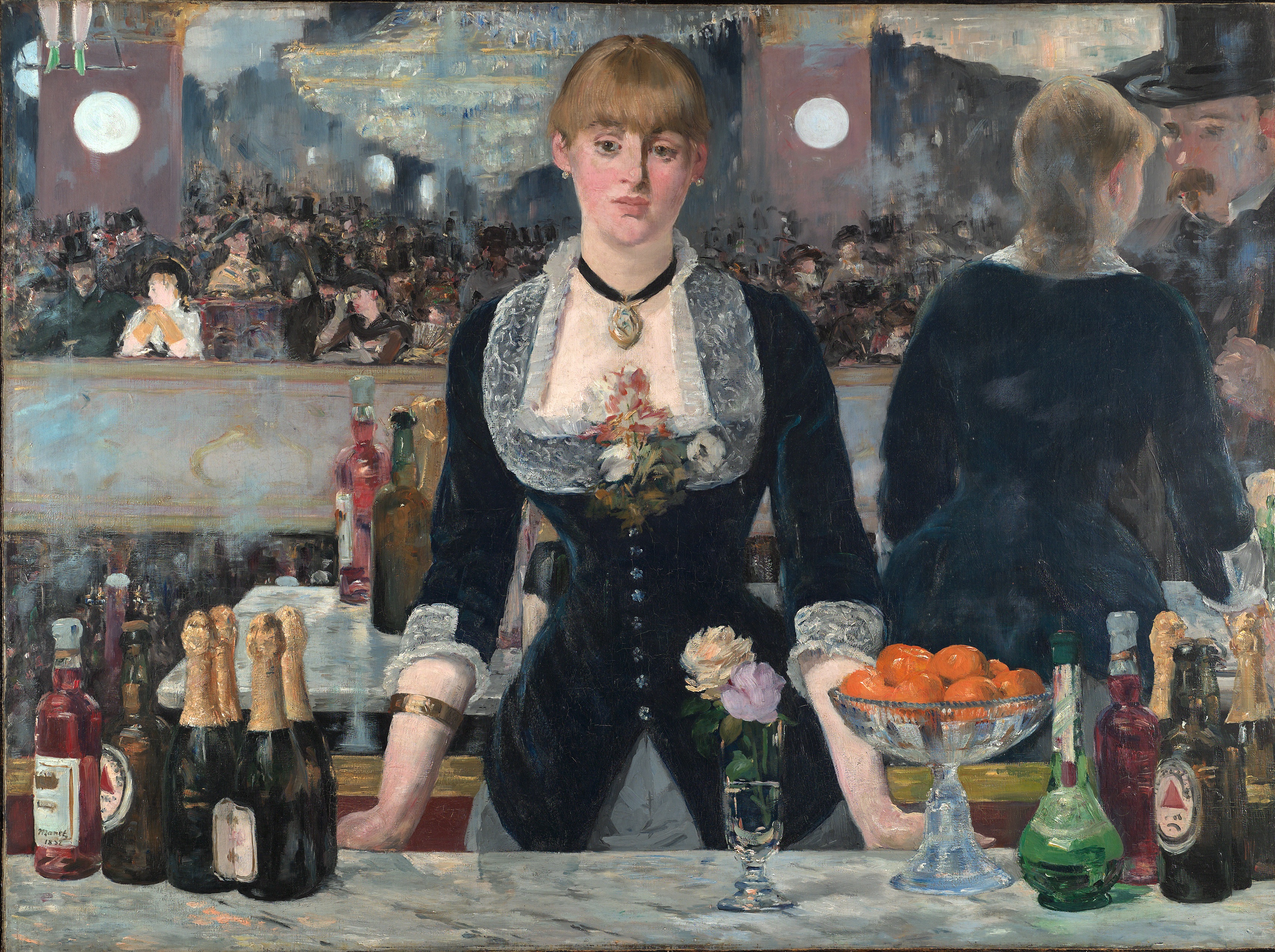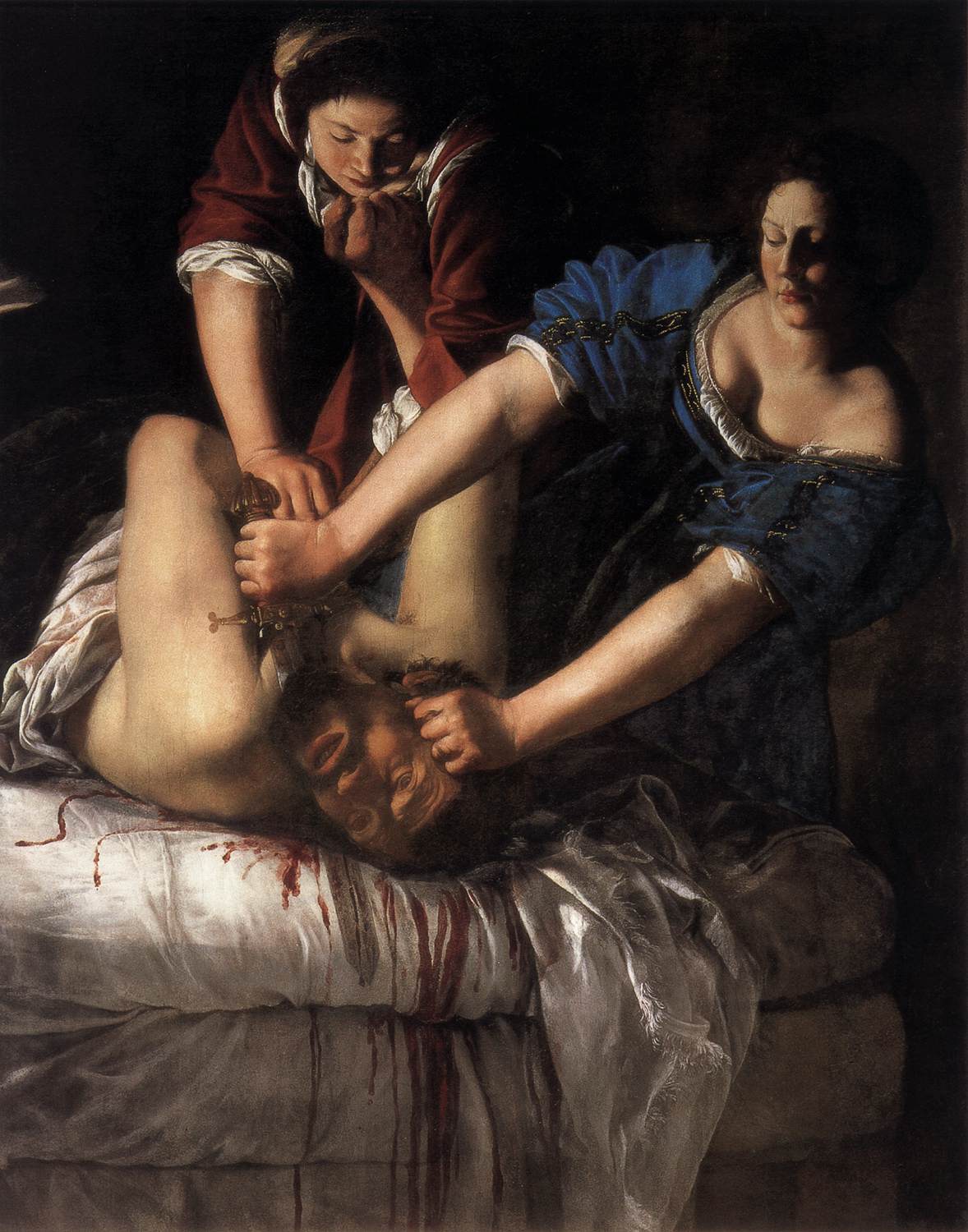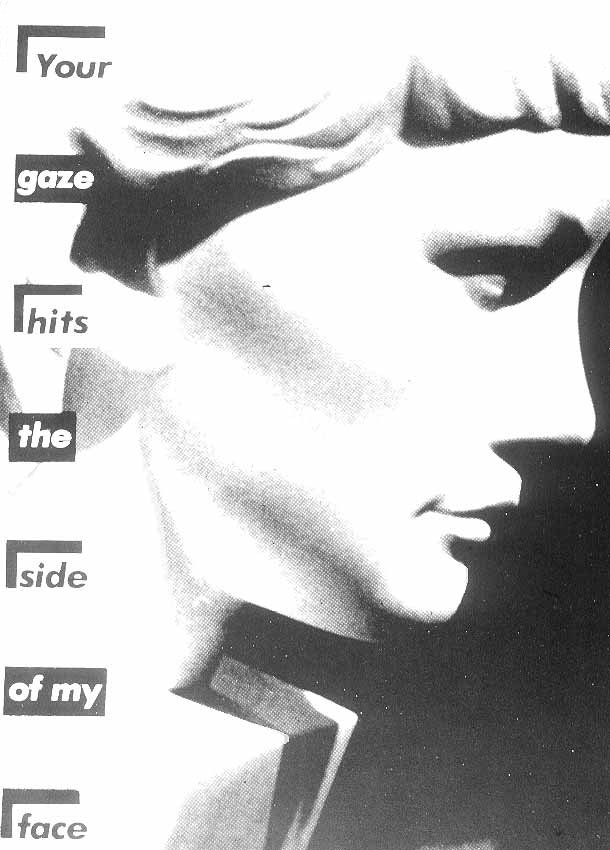'According to usage and conventions which are at last being questioned but have by no means been overcome - men act and women appear. Men look at women. Women watch themselves being looked at' (Berger 1972)
- What Berger is not saying is that women are vein
- He is saying women internalise the gaze
- Women have this effect of seeing themselves pictured
Hans Memling 'Vanity' 1485

- Women stands with her hand on one hip and then holding the mirror with her other hand
- Painting her nude because it gives him pleasure but by planting the mirror in her hand he is blaming the woman for her vanity
- Because she holds mirror and looks at herself it is OK for us to look at her
- He says that you painted this so that you could look at her body
- In 1485 in Europe was around the time there was a statue of the hammer of witches which allowed the catholic church to prosecute women
- Anything outside of the ideal at the time - If you drowned you were guilty
Alexandre Cabanel 'Birth of Venus' 1863
- Invited by the artist to gaze upon the figure
- Implies that the women invites us as well and doesn't stop us from looking
Sophie Dahl for Opium
- Deemed to be too sexual
- Hand on the breast
- Felt it was too sexual
- Wouldn't pass the advertising standards
- So they decided to turn it on the side when they published it
- The emphasis therefore changes and it is more on the face and less on the body
Titian's Venus of Urbino 1538
- Berger says the look in this woman's eye is a flirty invitation to look at her body
- The feeling of someone spying on her with the curtain behind as if it is a private space we are allowed secret access to
- The position of her left hand appears to be covering herself modesty but could also been seen as gesturing sexually
Manet - 'Olympia' 1863
- The slight different in pose to Titan's Venus of Urbino
- There is a difference in the woman's gaze
- She looks us in the eye
- Hand is very different in the way it is placed
- She is actually a prostitute
- She is a modern nude and has the symbols of the jewellery on her right arm which implicates that she has some wealth
- Presented as a gift from a suitor
- Celebrating powerful female figure
Ingres 'Le Grand Odalisque' 1814

- This photograph is used to create a gorilla image
Manet - Bar and the Folies Bergerers 1882

- The mirror is used so that we are put in the position of the painting
- The top right corner he is conversing with her
- What is reflected in the mirror is the Paris society she isn't a part of
- Highlights the superficiality of Paris at the time
Jeff Wall 'Picture For Women' 1979
- The woman is copying the look of the bar maid in the previous image
- Divided the picture in to thirds using the mirrors
- Difficult to work out where you are in relation to the woman
- The relationship between the artist and the woman
- Captures the act of making the image
- The photograph is constructed
- In Manet's painting we are almost put in to the scene
Coward R (1984)
- The camera in contemporary media has been put to use as an extension of the male gaze at women on the streets
- Figure of a semi naked woman normalised in to the streets
- The people around are not taking any notice of her making it a normal thing to do
- She is also wearing sunglasses which means that the gaze cannot be returned
Wonderbra Campaign Eva Herzigova 1994
- Normalisation of the female body in the street
- She is looking down at the people below
- There is no return of the gaze
- We are able to survey her body as an object
Corward R says the problem with the objectification of women makes women become considered as objects because of this confusion of images. The profusion of the images which characterises contemporary society could be seen as an obsessive distancing of women... A form of voyeurism (Peeping Tom, 1960).
Objectification of the male body
- Head thrown above his head
- As though he is closed
- We are allowed to look at his body while he is sleeping
- Dolce & Gabana ad - All of the males return our gaze
Can men be objectified? If so in what frequency is objectification in ads?...
Marilyn: William Travillas dress from The Seven Year Itch (1955)
- She looks at the way that bodies are chopped up by the camera for hollywood films
- Certain parts of the body will be chopped up
- Projects fantasies
- They do this so that we invest in the story
- The females in the film are never the drivers in the story
- They are not leading the narrative
- They are passive characters
- A cinema or lecture theatre are darkened to seduce us
- One may look without being seen
- Pleasure in looking has been split in the active male role and passive female role
Artemisia Gentileschi

- Referencing an active mythological role
- Part of her work is that she wants to reposition the role of women in art history
- Women have generally been left out of art history
- Her work is about repositioning women
Pollock G 1981
- Women 'marginalised within the masculine discourses of art history'
Cindy Sherman "Untitled Film Still 6" 1977-79

- She brings her hand to her face with almost mimicks the other images
- There is something not right about this image
- It looks staged
- It doesn't look natural
- This image challenges the gaze in this way
- We are not allowed to look at her without feeling awkward
Barbara Kruger 'Your gaze hits the side of my face' 1981

- She uses this text which is very much giving a cut out feel
- Reference to some kind of violence
- The idea of why can't we look at female bodies
Sarah Lucas 'Eating a banana' 1990

- Humorous
- As if so say what are you looking at?
Sarah Lucas Self Portrait 1996

- Again slightly humorous but still showing someone with a flat chest
Why is it important to have challenges to the gaze?
- It is important to have these challenges to the gaze because we still have page three
- Caroline Lucas MP in June 2013 was asked to remove the top she was wearing because it went against the dress code of the house of commons
Criadp-Perez argued that as the Equality Act 2010 commits public institutions to end discrimination. She received up to 50 threats a day via Twitter including threats to rape and murder. Although she reported the abuse lost evidence and she was forced to delete her account.
Lucy Ann Holmes, who founded a campaign to end the publication of the topless Page 3 Girls in The Sun newspaper last year, told the BBC that while she had also received death threats, she had not been subject to the level of sustained attack experienced by Criado-Perez.
Social networking is used to perpetuate the male gaze/the gaze of the media. The body is broken in to fragments - Could be any female. Plays on the teenagers body consciousness, potentially carrying those perceptions in to adult life.
Reality Television
- Appears to offer us the position as the all seeing eye the power of the gaze
- Allows us to voyeuristic passive consumption of a type of realirt
- Editing means that there is no reality
- Contestants are aware of their representation (either as TV professionals or as people who have watched the show)
- For example Big Brother
- We can see them but they can't see us
- We are able to watch men and women
"Looking is not indifferent. There can never be any question of just looking."
- Victor Burgin (1982)